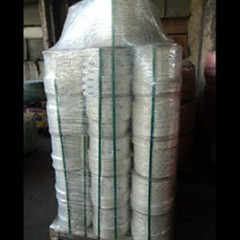
- Find Out More About:
- Rope Galore
byadmin
A membrane roofing system is a popular choice for a commercial roof; it is designed to reduce the possibility of pooling and to reduce the incidence of leaks which are often associated with other roofing systems. This type of roof is rapidly becoming the favorite type of commercial roof, replacing the old traditional roofs that were used in the past. Membranes roofs are used on flat roofs or roofs which are only slightly sloped. The roofing system is available in three types; thermo-set, thermoplastic and modified bitumen.
A thermo-set roof consists of rubber sheets which are laid on the roof surface, the rubber sheets overlap at the edges. The overlapped seams are heated which causes the rubber to melt, resulting in the series of sheets to become one large continuous membrane. The rubber that is used in manufacturing the sheets is designed to form a chemical bond when heated; the seal becomes as strong as the sheet.
A commercial roof using a thermoplastic membrane is quite similar to a thermo-set roofing system but the material is PVC rather than rubber. The sheets of PVC do not form a chemical bond but they do form a tight seal when heated but the seal is effective on keeping out water. A thermoplastic membrane roof is somewhat less expensive than a thermo-set roof but it will need a little more maintenance.
Of the three systems, modified bitumen is the least expensive and the most common. The bitumen comprises rubber compounds and certain modifiers which are added to normal asphalt roofing compound. The modified bitumen is heated so that when it installed on the roof it forms a tight seal. There are new variation’s of this material; the new material does not need heat for application, it is produced in sheets in the factory; the sheets are lapped and held in place by self-adhesive strips, the seams, which overlap form a watertight seal.
A classic membrane roof system is prone to leaks because of the way it is constructed; this is not the case when a membrane is used as the commercial roof. In the case of traditional membrane roofs the seams are not sealed tightly, this is not the case with modern membrane roofs. Another advantage is that there is no need to place a gravel overlay which is normally the case with an asphalt roof. Because membrane roofing sheets are fastened directly to the roof, there is no need for gravel to hold them in place.
A flat or low slope commercial roof is constructed using one of the three different membrane roofing systems. For complete details on membrane roofs you are invited to contact StormForce of Jacksonville.